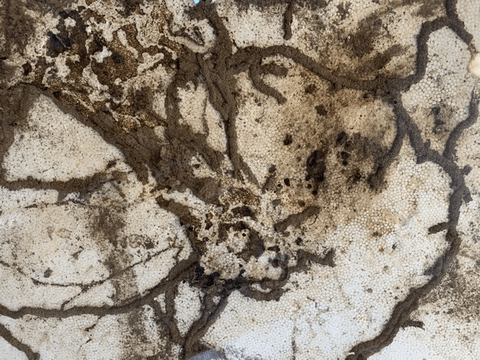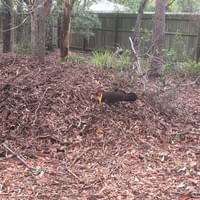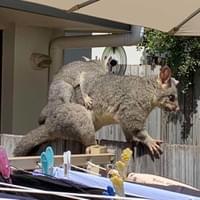

General Pest
Including ant, cockroach, rodent, spider, silver fish, bugs

Ant
Black ant / Green ant / Brown ant / Sugar ant / Meat ant
Ants are eusocial insects of the family Formicidae and, along with the related wasps and bees, belong to the order Hymenoptera. More than 12,500 of an estimated total of 22,000 species have been classified.
Ants form colonies that range in size from a few dozen predatory individuals living in small natural cavities to highly organised colonies that may occupy large territories and consist of millions of individuals. Larger colonies consist mostly of sterile, wingless females forming castes of "workers", "soldiers", or other specialised groups. Nearly all ant colonies also have some fertile males called "drones" and one or more fertile females called "queens".
Ant societies have division of labour, communication between individuals, and an ability to solve complex problems. Ants and their larvae are eaten in different parts of the world. Some ant species are even considered as pests.
Termites are not ants!

Cockroach
American cockroach / German cockroach / Asian cockroach / Oriental cockroach
Cockroaches are insects of the order Blattodea, sometimes called Blattaria, of which about 30 species out of 4,600 total are associated with human habitats. About 4 species are well known as pests.
Cockroaches are abundant throughout the world and live in a wide range of environments, especially in the tropics and subtropics.
Cockroaches are fast-breeding, they can live up to a year, and the female may produce up to eight egg cases in a lifetime; in favorable conditions, she can produce 300 to 400 offspring. Other species of cockroaches, however, can produce far more eggs. Cockroaches are among the hardiest insects. Some species are capable of remaining active for a month without food and are able to survive on limited resources.

Spider
Sydney funnel-webation / Redback spider / Mouse spider / Trap door spider / White-tailed spider / Australian tarantulas / Recluse spider / Huntsman spiders
Spiders (order Araneae) are air-breathing arthropods that have eight legs and chelicerae with fangs that inject venom. They are the largest order of arachnids and rank seventh in total species diversity among all other orders of organisms.
Spiders are found worldwide on every continent except for Antarctica, and have become established in nearly every habitat with the exceptions of air and sea colonization.
As of 2008, at least 43,678 spider species, and 109 families have been recorded by taxonomists; however, there has been dissension within the scientific community as to how all these families should be classified, as evidenced by the over 20 different classifications that have been proposed since 1900.

Rodent
Norway Rat / Roof Rat / House Mouse
Well-known rodents include mice, rats, squirrels, prairie dogs, chipmunks, chinchillas, porcupines, beavers, guinea pigs, hamsters, gerbils and capybaras. Most rodents are small animals with robust bodies, short limbs, and long tails.
Mice are typically distinguished from rats by their size. Generally, when someone discovers a smaller muroid rodent, its common name includes the term mouse. If it is larger, the name includes the term rat.
Cats, wild dogs, foxes, birds of prey, snakes and even certain kinds of arthropods have been known to prey heavily upon mice. Despite this, mice populations remain plentiful. They have remarkable adaptability to almost any environment.
Rats and mice can spread disease, that is why rodent control is significant.

Silverfish
The silverfish is a nocturnal insect typically 13–25 mm (0.5–1.0 in) long. Its abdomen tapers at the end, giving it a fish-like appearance.
They inhabit moist areas, requiring a relative humidity between 75% and 95%. In urban areas, they can be found in attics, basements, bathtubs, sinks, kitchens, old books, classrooms, and showers.
Silverfish consume matter that contains polysaccharides. These include book bindings, carpet, clothing, coffee, dandruff, glue, hair, some paints, paper, photos, plaster, and sugar. They will damage wallpaper in order to consume the paste. Other substances they may eat include cotton, dead insects, linen, silk, leftover crumbs, or even their own exuviae. During famine, a silverfish may even consume leatherware and synthetic fabrics. Silverfish can live for a year or more without eating if water is available.

Bedbugs
Bedbugs are small, oval, brownish insects that live on the blood of animals or humans. Adult bedbugs have flat bodies about the size of an apple seed. After feeding, however, their bodies swell and are a reddish color.
Bedbugs do not fly, but they can move quickly over floors, walls, and ceilings. Female bedbugs may lay hundreds of eggs, each of which is about the size of a speck of dust, over a lifetime.
Bedbugs may enter your home undetected through luggage, clothing, used beds and couches, and other items. Their initial hiding places are typically in mattresses, box springs, bed frames, and headboards where they have easy access to people to bite in the night.
Bedbugs are active mainly at night and usually bite people while they are sleeping. They feed by piercing the skin and withdrawing blood through an elongated beak. The bugs feed from three to 10 minutes to become engorged and then crawl away unnoticed.
Termites
Schedorhinotermes intermedius / Coptotermes acinaciformis / Nasutitermes walkeri / Microcerotermes turneri / Heterotermes ferox
Termites are a group of eusocial insects that were classified at the taxonomic rank of order Isoptera, but are now accepted as the infraorder Isoptera, of the cockroach order Blattodea. While termites are commonly known, especially in Australia, as "white ants," they are not closely related to the ants.
Like ants, and some bees and wasps, termites divide labour among castes, produce overlapping generations and take care of young collectively. Termites mostly feed on dead plant material, generally in the form of wood, leaf litter, soil, or animal dung, and about 10% of the estimated 4,000 species (about 3,106 taxonomically known) are economically significant as pests that can cause serious structural damage to buildings, crops or plantation forests.
Termites are major detritivores, particularly in the subtropical and tropical regions, and their recycling of wood and other plant matter is of considerable ecological importance. As eusocial insects, termites live in colonies that, at maturity, number from several hundred to several million individuals. A typical colony contains nymphs (semimature young), workers, soldiers, and reproductive individuals of both sexes, sometimes containing several egg-laying queens.

Termites on tree branches

Termite nests

Termite mudding

Termites

PHONE
07 3700 6008
0432 020 618
ADDRESS
200 Beatty Rd Archerfield, QLD 4108
admin@
0432 020 618
WECHAT BLOG
Eco-Global
Nominee QBCC Lic 1137061
Company QBCC Lic 1318504
ABN 55 132 821 302















